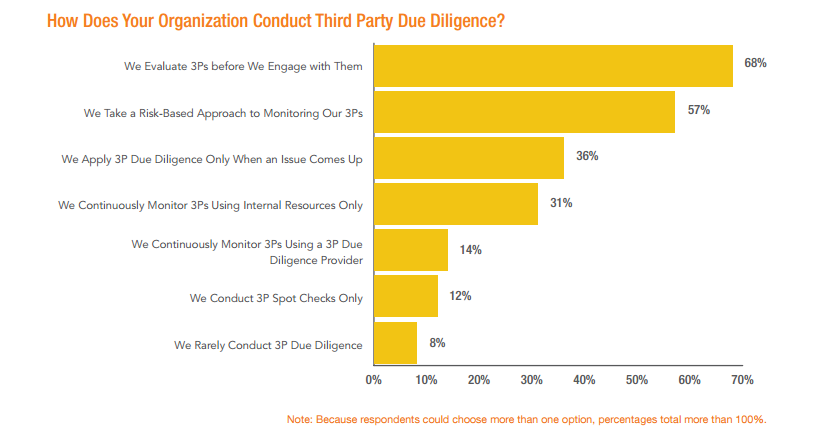To help prepare compliance professionals for the year ahead, we’ve talked with industry experts, our colleagues at NAVEX Global, and ethics and compliance professionals from our more than 12,500 client organizations to gather insights on the top issues and trends that will impact compliance programs in 2016. We’ll share each of the trends here over the next few weeks.
In recent years, questions have been raised—both in the industry and by employees and leadership teams in organizations—about whether the scope of our ethics and compliance programs have become too narrowly focused. Cyber security, sustainability, marketing, advertising, philanthropy, human rights and community engagement are all high-profile areas with clear ethics and compliance components that are too often viewed as being beyond our job descriptions. And yet ethics and compliance lapses in these areas can have significant ramifications for our organizations.
Clear Benefits to Broadening E&C Scope, But Take a Thoughtful Approach
Fundamentally, one of the key goals of any E&C program should be to protect the organization’s reputation. Seen in this light, our tendency to focus on a short-list of risk areas (gifts and entertainment, conflicts of interest, harassment and anti-corruption) seems woefully inadequate to address the broader range of ethical challenges our organizations now face. We also undermine our credibility when our priorities don’t align with top-of-mind business ethics issues that impact the public and our employees.

Expanding our authority and responsibilities into these and other areas is a long-term goal beyond 2016, and the advantages need to be carefully weighed against the risks—including turf battles and adding more to our to-do lists without a commensurate increase in budget and resources. But in the short-term, it is certainly a good idea to look for opportunities to push the boundaries of our programs and our reach.
Key Steps for Organizations to Take
Begin by looking for areas that may be just beyond your purview but where a strong case can be made for your involvement. For example:
- Start with the organization’s risk assessments.
If your organization has taken the time and resources to conduct an ethics, compliance and reputational risk assessment, and/or a full enterprise risk assessment, it has already highlighted the areas of most concern to leaders and subject matter experts. Understand what these are and find ways to use your established systems and processes to help the organization address the broader risk profile where appropriate. - Pay attention to advertising, marketing and your values.
Be proactive and look for opportunities to discuss the extent to which your organization’s values are taken into consideration when advertising and marketing campaigns are designed. In one company we know of, the disconnect between marketing and ethics was so stark that the organization found itself surprised by an unexpected firestorm of criticism from their own employees, as well as a threatened consumer boycott. At the heart of the crisis was an ad campaign that many viewed as sexist and contrary to the company’s stated position on respect and gender issues. In many cases, these reputational disasters can be avoided with a careful compliance eye watching out for the organization’s best interests. - Ask questions about who owns key risk areas.
Other risk areas that lie just outside of most ethics officers comfort zone but can have compliance and reputational repercussions include: cyber security, mergers and acquisitions, expansion into countries with a history of high corruption levels, product development and customer privacy. At the very least, it’s important for you to determine if someone in your organization knows about these risk areas. After you know who to connect with, you can confirm that related E&C issues have been identified and addressed. - Find common ground.
Many organizations have a separate, dedicated resource addressing corporate social responsibility, sustainability and human rights. There is much common ground here and it is in everyone’s best interest to coordinate efforts. Begin with the clearest areas of overlap: if your E&C program emphasizes respect, diversity and equal opportunities, this can dovetail nicely with your commitment to human rights. Similarly, your E&C standards pertaining to civic engagement and conflicts of interest likely overlap with broader issues pertaining to community engagement and philanthropy.
For more insights on the latest ethics and compliance news and trends, subscribe to our blog and never miss another post.






